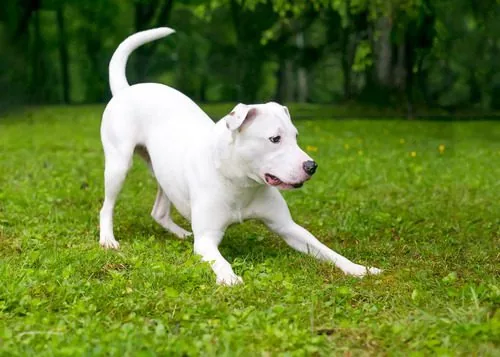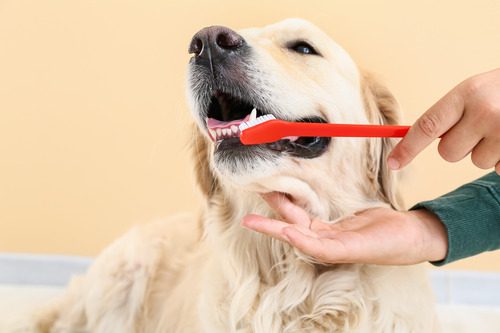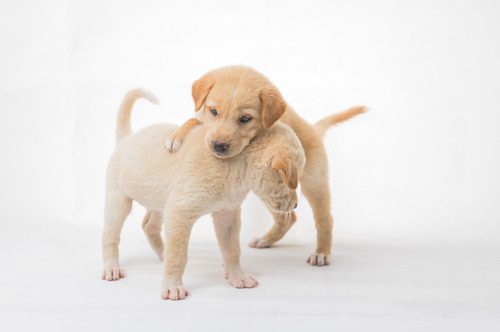What Does Your Dog’s Tail Wag Really Mean?
Dogs use their tails for much more than just wagging when they’re happy. If you’ve ever wondered about your dog’s tail wag meaning, you’re not alone. Many pet owners assume that a wagging tail is a sign of joy, but tail movements can express a range of emotions, from excitement to fear and even aggression. In this blog, we’ll discuss the meaning behind different tail wags to help you better interpret your dog’s feelings and behaviors. At Providence Veterinary Hospital and Clinic in Alameda, California, we want to help you strengthen your bond with your pet by recognizing these important cues.

The Role of Tail Wagging in Canine Communication
A dog’s tail serves as an important communication tool, much like facial expressions and vocalizations. While tail wags may seem simple, they can convey complex emotions. Dogs use tail movements to interact with humans and other animals, signaling everything from excitement to uncertainty.
Why Do Dogs Wag Their Tails?
Tail wagging is a natural behavior that begins when puppies are only a few weeks old. Initially, they wag their tails as a way to communicate with their littermates and mother. As dogs mature, tail wags become a key part of their social interactions. Each movement is influenced by a combination of instinct, learned behavior, and context.
The Science Behind Tail Wagging
Studies have shown that the direction of a dog’s tail wag can indicate whether they are experiencing positive or negative emotions. Research suggests that wags to the right tend to be associated with happiness and relaxation, while wags to the left may indicate nervousness or unease. This asymmetry is linked to brain activity, as different hemispheres control different types of emotional responses.
Different Types of Tail Wags and Their Meanings
Not all tail wags are the same, and understanding their subtle differences can help you respond appropriately to your dog’s emotions.
Fast Wagging with a Relaxed Body
A fast, loose wag often signals happiness and excitement. Dogs commonly display this behavior when greeting their owners or meeting new people in a friendly manner. The rest of the dog’s body will typically be relaxed, with an open mouth and a playful stance.
Slow Wag with a Tense Body
A slow wag combined with a stiff posture may indicate uncertainty or nervousness. This type of wag suggests that the dog is assessing a situation before reacting. If you notice this behavior, it’s best to allow your dog time to evaluate their surroundings and feel safe before proceeding with interaction.
High and Stiff Wagging
When a dog holds their tail high and wags it rigidly, they may be showing dominance or alertness. This type of wag is often seen in confident dogs asserting their presence. If accompanied by raised hackles or direct staring, it could signal potential aggression or a defensive stance.
Low Wag with a Tucked Tail
A low, slow wag combined with a tucked tail often indicates fear or submission. Dogs displaying this type of body language may feel intimidated, stressed, or anxious. This behavior is commonly observed in dogs who are uncomfortable with a situation or experiencing fear of punishment.
Broad, Sweeping Wag
A broad, full-body wag that moves the hips is typically a clear sign of friendliness and excitement. This kind of wag is commonly seen in dogs who are eager to play or interact with their favorite people.
The Influence of Breed and Tail Shape on Wagging
Tail wagging is not the same for every dog, as factors like breed and tail structure can affect how a dog expresses emotions through tail movement.
Breeds with Naturally Curled Tails
Some dog breeds, like Pugs and Akitas, have naturally curled tails that may not visibly wag in the same way as straight-tailed breeds. Instead, these dogs may rely more on body posture and facial expressions to communicate their emotions.
Docked Tails and Their Impact
Some breeds have traditionally docked tails, such as Boxers and Dobermans. While these dogs can still communicate through body language, their ability to use tail movements may be limited, making other forms of canine communication more important for interpretation.
Understanding Tail Wagging in Different Contexts
Tail wagging should always be interpreted within the full context of a dog’s behavior and surroundings.
- Tail Wagging During Play: Playful tail wags are typically loose and relaxed, often accompanied by other playful behaviors like play bows, bouncing movements, and excited barks.
- Tail Wagging During Greetings: When greeting familiar people or pets, dogs may exhibit a happy, fast wag with a relaxed body. However, a slow wag with hesitation may indicate uncertainty about a new encounter.
- Tail Wagging When Feeling Threatened: If a dog feels threatened or uncomfortable, they may hold their tail high with a stiff wag. In some cases, a dog may wag their tail just before reacting aggressively. It’s important to observe other body signals, such as growling or raised hackles, to fully understand the situation.
By recognizing the different types of tail wags and what they mean, you can build a stronger, more trusting relationship with your dog. Paying attention to your dog’s tail movements can help you better understand their emotions and provide reassurance in unfamiliar situations. If you have questions about your dog’s behavior or need guidance on improving communication with your pet, the team at Providence Veterinary Hospital and Clinic is here to help. Call us at (510) 521-6608 or (510) 521-5775 to schedule an appointment today.
Recent Posts
Feline Leukemia: Prevention and Detection
Feline Leukemia: Prevention and Detection Cat Feline Leukemia is a serious viral disease that affects felines worldwide….
A Team Effort: How Home Care and Professional Cleanings Keep Your Dog’s Teeth Healthy
A Team Effort: How Home Care and Professional Cleanings Keep Your Dog’s Teeth Healthy Dental health is…
The Perfect Pair: Home Care and Professional Cleanings for Your Cat’s Teeth
The Perfect Pair: Home Care and Professional Cleanings for Your Cat’s Teeth Caring for your cat’s teeth…
What is Bordetella and Why Should You Care?
What is Bordetella and Why Should You Care? Bordetella is a term many pet owners hear when…
Why Are Dogs Scared of Loud Noises?
Why Are Dogs Scared of Loud Noises? Loud noises can be a significant source of stress and…
Providence Veterinary Hospital & Clinic serve Alameda, CA as well as Oakland, San Leandro, and the surrounding areas with superb veterinary medicine and gentle, compassionate care. We’ve been a part of this community since 1947 when a veterinarian started seeing pets in his home after the end of World War II. He built an animal hospital right under his house, and that’s where we remain to this day (with modern remodeling in 2016, to outfit the hospital with the latest medical technology and equipment, of course!).





